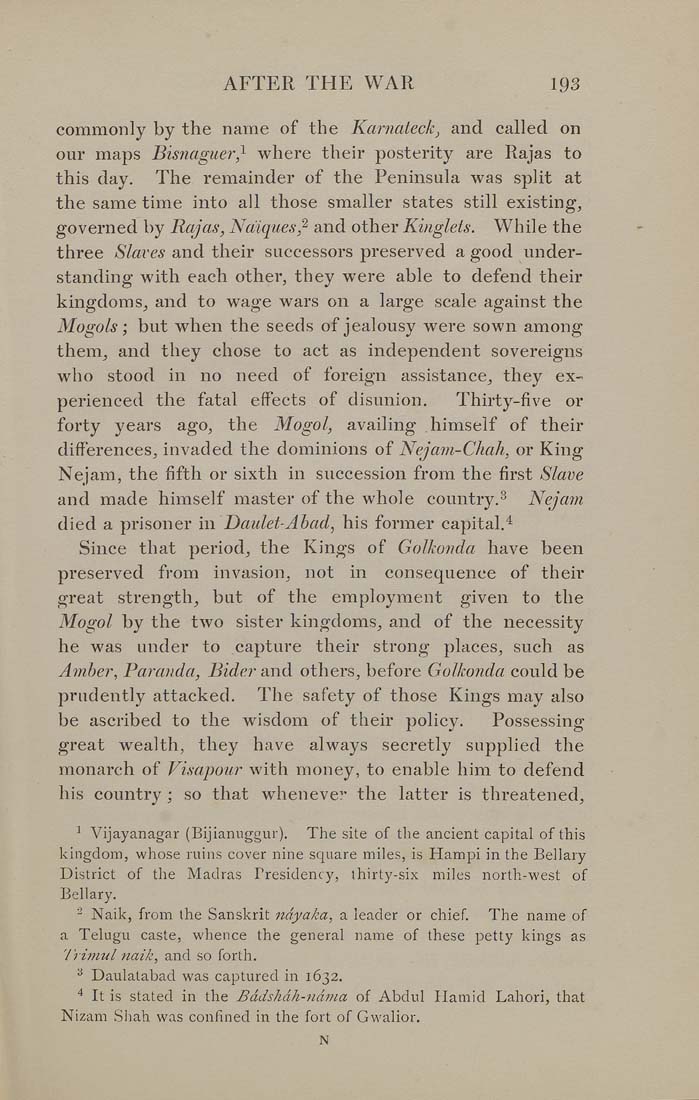AFTER THE WAR 193
commonly by the name of the Karnateck, and called on
our maps Bisnaguer,^ where their posterity are Rajas to
this day. The remainder of the Peninsula was split at
the same time into all those smaller states still existing,
governed by Rajas, Ndiques,^ and other Kinglets. While the
three Slaves and their successors preserved a good under¬
standing with each other, they were able to defend their
kingdoms, and to wage wars on a large scale against the
Mogols; but when the seeds of jealousy were sown among
them, and they chose to act as independent sovereigns
who stood in no need of foreign assistance, they ex¬
perienced the fatal effects of disunion. Thirty-five or
forty years ago, the Mogol, availing himself of their
differences, invaded the dominions of Nejam-Chah, or King
Nejam, the fifth or sixth in succession from the first Slave
and made himself master of the whole country.' Nejam
died a prisoner in Daulet-Abad, his former capital.*
Since that period, the Kings of Golkonda have been
preserved from invasion, not in consequence of their
great strength, but of the employment given to the
Mogol by the two sister kingdoms, and of the necessity
he was under to capture their strong places, such as
Amber, Paranda, Bider and others, before Golkonda could be
prudently attacked. The safety of those Kings may also
be ascribed to the wisdom of their policy. Possessing
great wealth, they have always secretly supplied the
monarch of Visapour witli money, to enable him to defend
his country ; so that wheneve?' the latter is threatened,
^ Vijayanagar (Bijianuggnr). The site of the ancient capital of this
kingdom, whose ruins cover nine square miles, is Plampi in the Bellary
District of the Madras Presidency, thirty-six miles north-west of
Bellary.
- Naik, from the Sanskrit ndyaka, a leader or chief The name of
a Telugu caste, whence the general name of these petty kings as
Trimul naik, and so forth.
•^ Daulatabad was captured in 1632.
* It is stated in the Bddshdh-ndma of Abdul Hamid Lahori, that
Nizam Shah was confined in the fort of Gwalior.
N
|








